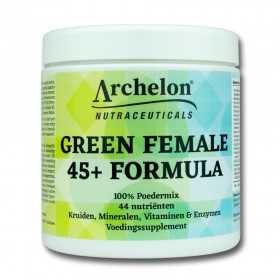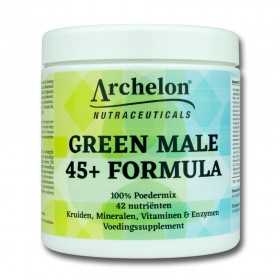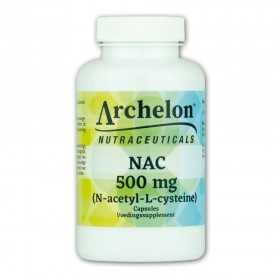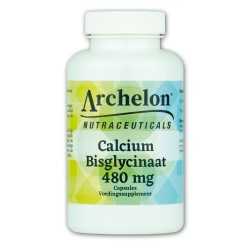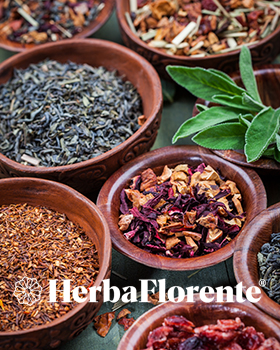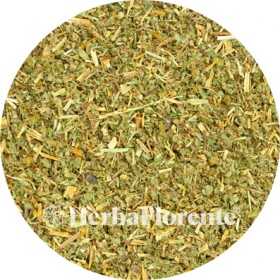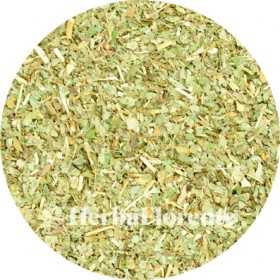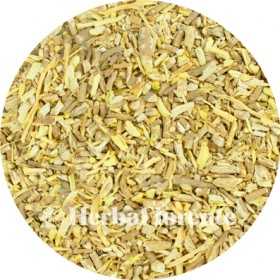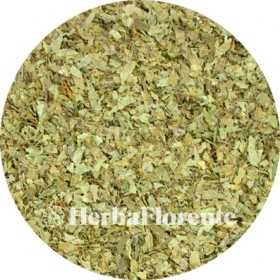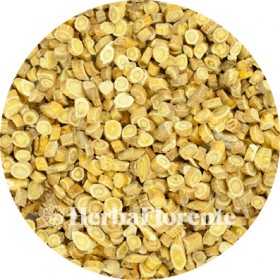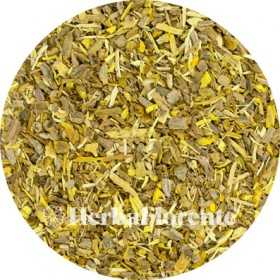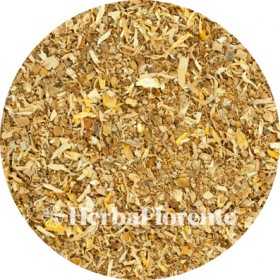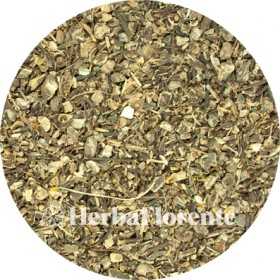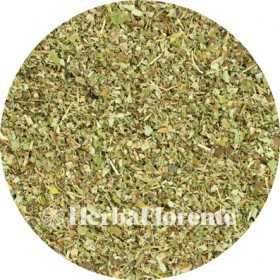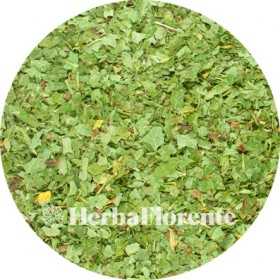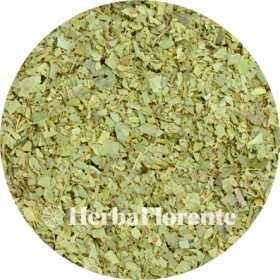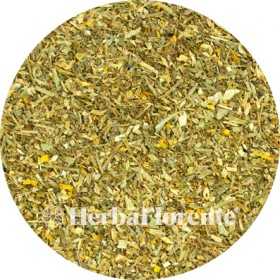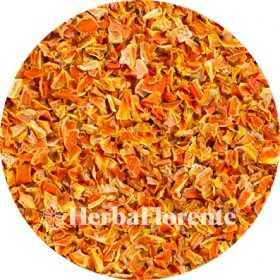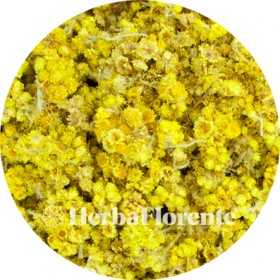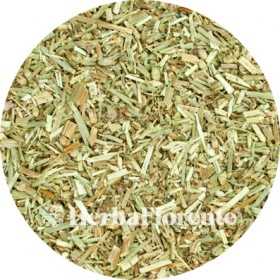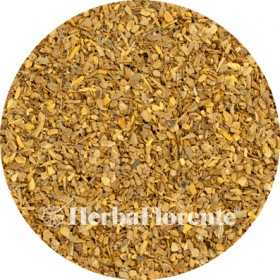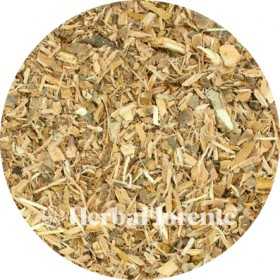A, B, C, .... X, Y, Z
There are 98 products.
Agremonie (Common) (Church Steeples) - Agrimonia eupatoria
Agremonie (Common) (Church Steeples) - Agrimonia eupatoria
Ingredients:
English Name: Agremonie (Common) (Church Steeples) Herb Cut
Latin name: Agrimonia eupatoria Hb. Conc.
Digestion
Liver
Gal
Kidneys
Bladder
Ingredients:
English Name: Agremonie (Common) (Church Steeples) Herb Cut
Latin name: Agrimonia eupatoria Hb. Conc.
Digestion
Liver
Gal
Kidneys
Bladder
€1.95
From: €1.95
Alfalfa - Medicago sativa
Alfalfa - Medicago sativa
Ingredients:
English name: Alfalfa Herb Cut
Latin name: Medicago sativa Hb. Conc.
Resistance
Digestion
Blood
Menopause
Ingredients:
English name: Alfalfa Herb Cut
Latin name: Medicago sativa Hb. Conc.
Resistance
Digestion
Blood
Menopause
€1.50
From: €1.50
Artichoke - Cynaria scolmycus - Cut
The artichoke (Cynara scolymus) is a plant that originates from the Mediterranean region. People eat the closed green or purple flower buds as vegetables. The artichoke leaf has a slightly bitter taste. This plant has been consumed for centuries for the support it provides to digestion and the cleansing effect of the liver, thanks to its high concentration of antioxidants.
The artichoke is rich in various nutrients and phytonutrients. It contains beta-carotene, vitamin C, vitamin B, and minerals such as calcium, magnesium and potassium. It also contains flavonoids, enzymes and tannins.
The artichoke is rich in various nutrients and phytonutrients. It contains beta-carotene, vitamin C, vitamin B, and minerals such as calcium, magnesium and potassium. It also contains flavonoids, enzymes and tannins.
€1.95
From: €1.95
Ash - Fraxini
Ash - Fraxini
Ingredients:
English: Ash leaf Cut.
Latin name: Fraxini Fol. Conc.
Blood
Detox
Nerves
Kidneys
Bladder
Ingredients:
English: Ash leaf Cut.
Latin name: Fraxini Fol. Conc.
Blood
Detox
Nerves
Kidneys
Bladder
€1.95
From: €1.95
Ashwagandha - Withania somnifera - Cut
In Ayurvedic medicine, ashwagandha is known as a 'rasayana', meaning it is used to support both physical and mental health. It has a calming effect and is used to sleep better and promote a balanced mind. In India, where this herb originates, it is believed to support male potency and female health, often compared to the strength and vitality of a horse.
€3.00
From: €3.00
Asian Pennywort (Gotu kola) - Hydrocotyles Folium (Centella asiatica)
Asian pennywort also known as Gotu kola(Centella asiatica), is a plant that thrives in Southeast Asia and plays a central role in Ayurvedic medicine. Due to its diverse active substances, Asian pennywort is widely used in herbal medicine. It is known for supporting cognitive functions such as memory, concentration and learning, and it is also used to promote healthy blood circulation and vascular function.
Asian pennywort is a delicate plant with creeping stems and small, rounded leaves, often accompanied by white or pink flowers. The main bioactive compounds in Asian pennywort are triterpene glycosides, alkaloids and essential oils.
Asian pennywort is a delicate plant with creeping stems and small, rounded leaves, often accompanied by white or pink flowers. The main bioactive compounds in Asian pennywort are triterpene glycosides, alkaloids and essential oils.
€3.50
From: €3.50
Astragalus - Astragalus chinensis membranus - Cut
Astragalus, also known as Fleshy Locust (Astragalus membranaceus), is a plant native to Asia. It has been used for 2000 years in traditional Chinese herbal medicine to strengthen the immune system. In addition to this property, astragalus has many other benefits. According to Chinese tradition, it strengthens the life force, or 'qi', as it is called in China, when ingested. It is known as a powerful antioxidant and is especially valued for its ability to support the immune system.
€2.20
From: €2.20
Barberry - Berberidi vulgaris
Barberry - Berberidi vulgaris
Ingredients:
English: Barberry Bark Cut
Latin name: Berberidi vulgaris Cort. Conc.
Stomach
Digestion
Gal
Kidneys
Ingredients:
English: Barberry Bark Cut
Latin name: Berberidi vulgaris Cort. Conc.
Stomach
Digestion
Gal
Kidneys
€2.00
From: €2.00
Bearberry - Arctostaphylos uva-ursi - Cut
Bearberry - Arctostaphylos uva-ursi
Ingredients:
English: Bearberry Leafs Cut
Latin name: Arctostaphylos uva-ursi Fol. Conc.
Bladder
Prostate
Mucous membranes
Kidneys
Urinary tract
Ingredients:
English: Bearberry Leafs Cut
Latin name: Arctostaphylos uva-ursi Fol. Conc.
Bladder
Prostate
Mucous membranes
Kidneys
Urinary tract
€2.00
From: €2.00
Birch - Butla alba, Betulae
Birch (Betula) has been valued for centuries for its beneficial properties, thanks to the presence of bioactive substances. In the past it was even considered a sacred tree. In the spring, just before the tree sprouts, birch sap is tapped because that is when the sap flow is strongest. This juice is full of phytonutrients, minerals and vitamins.
Birch is rich in flavonoids, saponins and tannins. The saponins and tannins are responsible for the diuretic properties of the birch. Birch supports, among other things, kidney function and a healthy urinary tract, and is beneficial for the liver. In addition, it promotes joint health and contributes to maintaining normal cholesterol levels.
Birch is rich in flavonoids, saponins and tannins. The saponins and tannins are responsible for the diuretic properties of the birch. Birch supports, among other things, kidney function and a healthy urinary tract, and is beneficial for the liver. In addition, it promotes joint health and contributes to maintaining normal cholesterol levels.
€1.95
From: €1.95
Black Cohosh - Cimicifuga Racemosa
Out-of-Stock
Black cohosh (Cimicifuga racemosa), has been used in North American herbal medicine for centuries. The roots of this plant have been used for centuries by northern Indian tribes, where it is known as "squawroot" (where 'squaw' refers to 'Indian woman'). Black cohosh is best known as an herb specifically aimed at women and is becoming increasingly popular in the Netherlands. It provides support for menopausal symptoms such as hot flashes and irritable feelings.
€6.40
From: €6.40
Black Walnut - Juglandis nigrum
The shell of the black walnut (Juglans nigra) comes from the immature fruits of the black walnut tree (Juglans nigra).
Black walnut (Juglans nigra, also known as 'black nut') is a species of walnut that grows naturally only in the United States and Canada, hence the term American black walnut. Juglans nigra belongs to the walnut family.
The fruits are dark brown and have a strong odor distinct from European walnuts. In America, the use of black walnut has long been common among herbalists. It is often used in the form of an extract or tincture in herbal medicine, because this way the active substances are optimally preserved. The fruits are edible and contain polyphenols, tannins, juglon, tannins and omega fatty acids.
Black walnut (Juglans nigra, also known as 'black nut') is a species of walnut that grows naturally only in the United States and Canada, hence the term American black walnut. Juglans nigra belongs to the walnut family.
The fruits are dark brown and have a strong odor distinct from European walnuts. In America, the use of black walnut has long been common among herbalists. It is often used in the form of an extract or tincture in herbal medicine, because this way the active substances are optimally preserved. The fruits are edible and contain polyphenols, tannins, juglon, tannins and omega fatty acids.
€2.50
From: €2.50
Blackberry (Leaf) - Rubus fructicosus, Frucus Rubi
Blackberry - Rubus fructicosus, Frucus Rubi
Ingredients:
English: Blackberry leaf Cut.
Latin name: Rubus fructicosus, Frucus Rubi Fol. Conc.
Digestion
Stomach
Heart
Blood vessels
Ingredients:
English: Blackberry leaf Cut.
Latin name: Rubus fructicosus, Frucus Rubi Fol. Conc.
Digestion
Stomach
Heart
Blood vessels
€1.50
From: €1.50
Blackcurrant - Ribes nigrum
The Latin name for blackcurrant is Ribes nigrum L. 'Nigrum' refers to the dark color and 'ribes' to the berries themselves. Various parts of the blackcurrant plant are attributed with different health benefits. The berries, seeds and leaves exhibit unique properties. For example, blackcurrant leaves are used to maintain healthy cartilage and to keep the joints flexible.
€2.95
From: €2.95
Bladderwrack Fine - Fucus vesiculosus
Bladderwrack (Fucus vesiculosus) is a type of brown algae belonging to the genus Fucus. It thrives along the northern coasts of the Atlantic and Pacific Oceans, and in the North Sea and Baltic Sea, often found in kelp forests. This seaweed is characterized by air bladders that serve as a floating organ, although there are also variants without these bladders.
Like other brown algae, bladderwrack is rich in a specific class of polyphenols called phlorotannins, which possess powerful antioxidant properties. In addition, these phlorotannins have antibiotic, antifungal and anti-inflammatory properties.
Like other brown algae, bladderwrack is rich in a specific class of polyphenols called phlorotannins, which possess powerful antioxidant properties. In addition, these phlorotannins have antibiotic, antifungal and anti-inflammatory properties.
€1.95
From: €1.95
Boldoblad - Peumus boldus
Boldo (Peumus Boldus) is a versatile plant with a long history of positive effects on the liver, bile and digestion. It contains a combination of alkaloids, essential oils, flavonoids and tannins, which together provide these beneficial properties. By supporting the liver and bile and promoting healthy digestion, boldo is a valuable addition to a healthy lifestyle. In addition, boldo strengthens the immune system and acts as a powerful antioxidant.
€1.95
From: €1.95
California Poppy - Eschscholzia californica
California Poppy, also known as golden poppy (Eschscholtzia californica), is a plant with golden yellow flowers that belongs to the poppy family. It owes this name to its soothing properties, which help with natural, healthy sleep and stress reduction.
This plant is native to California, hence the name. The indigenous people of America traditionally used golden poppy as a sedative herb and to help them sleep better. The aerial parts of the golden poppy contain several active substances, including quinolide alkaloids, rutin, phytosterols, carotenoids and cyanogen glycosides.
This plant is native to California, hence the name. The indigenous people of America traditionally used golden poppy as a sedative herb and to help them sleep better. The aerial parts of the golden poppy contain several active substances, including quinolide alkaloids, rutin, phytosterols, carotenoids and cyanogen glycosides.
€2.00
From: €2.00
Carrot - Dauci carotae
Carrot - Dauci carotae
Ingredients:
English: Carrot Cut.
Latin name: Dauci carotae Rad. Conc.
Liver
Bladder
Blood pressure
Vitamins
Kidneys
Ingredients:
English: Carrot Cut.
Latin name: Dauci carotae Rad. Conc.
Liver
Bladder
Blood pressure
Vitamins
Kidneys
€1.95
From: €1.95
Catnip - Nepetae catariae
Wild catnip (Nepeta cataria) belongs to a genus of 250 species in the family Lamiaceae. The genus is closely related to Glechoma, Stachys and Prunella. This genus originally occurs in Europe and Asia. The stems grow in nodes and often form dense carpets on the ground. The leaves are coarsely toothed and feel soft because of the hairs. The erect stems bear small, tubular flowers in pairs that are located in the axils of the leaves.
€2.20
From: €2.20
Chast Weed Yellow - Stoechados (Gnaphalium arenarium)
Chast Weed Yellow - Stoechados (Gnaphalium arenarium)
Ingredients:
English: Chast Weed Yellow Flower Cut.
Latin name: Stoechados (Gnaphalium arenarium) Flor. Conc.
Bladder
Blood
Detox
Mood
Period
Stomach
Digestion
Liver
Gal
Cold
Ingredients:
English: Chast Weed Yellow Flower Cut.
Latin name: Stoechados (Gnaphalium arenarium) Flor. Conc.
Bladder
Blood
Detox
Mood
Period
Stomach
Digestion
Liver
Gal
Cold
€2.40
From: €2.40
Chicory (Herb) - Cichorium Intybus
Chicory (Cichorium) belongs to the composite family (Compositae or Asteraceae) and includes well-known vegetables such as chicory and endive. It is mainly consumed for health reasons.
Since the late years of the twentieth century, chicory roots have been cultivated not only for chicory, but also for the production of inulin and sweeteners, especially fructose. Both inulin (a dietary fiber) and fructose are widely used in the food industry.
Roasted chicory root is used as a coffee substitute or as an ingredient in coffee brewing. In the past, this was done out of necessity, such as during the Napoleonic blockade during the French occupation.
Since the late years of the twentieth century, chicory roots have been cultivated not only for chicory, but also for the production of inulin and sweeteners, especially fructose. Both inulin (a dietary fiber) and fructose are widely used in the food industry.
Roasted chicory root is used as a coffee substitute or as an ingredient in coffee brewing. In the past, this was done out of necessity, such as during the Napoleonic blockade during the French occupation.
€1.95
From: €1.95
Chicory (Root) - Cichorium Intybus - Cut
Chicory (Cichorium) belongs to the composite family (Compositae or Asteraceae) and includes well-known vegetables such as chicory and endive. It is mainly consumed for health reasons.
Since the late years of the twentieth century, chicory roots have been cultivated not only for chicory, but also for the production of inulin and sweeteners, especially fructose. Both inulin (a dietary fiber) and fructose are widely used in the food industry.
Roasted chicory root is used as a coffee substitute or as an ingredient in coffee brewing. In the past, this was done out of necessity, such as during the Napoleonic blockade during the French occupation.
Since the late years of the twentieth century, chicory roots have been cultivated not only for chicory, but also for the production of inulin and sweeteners, especially fructose. Both inulin (a dietary fiber) and fructose are widely used in the food industry.
Roasted chicory root is used as a coffee substitute or as an ingredient in coffee brewing. In the past, this was done out of necessity, such as during the Napoleonic blockade during the French occupation.
€1.95
From: €1.95
Cinnamon - Cinnamomi ceylon - Cut
Cinnamon - Cinnamomi ceylon
Ingredients:
English: cinnamon bark Cut.
Latin name: Cinnamomi ceylon Cort. Conc.
Appetite
Digestion
Stomach
Fatigue
Blood pressure
Period
Concentration
Memory
Airways
Heart
Blood vessels
Ingredients:
English: cinnamon bark Cut.
Latin name: Cinnamomi ceylon Cort. Conc.
Appetite
Digestion
Stomach
Fatigue
Blood pressure
Period
Concentration
Memory
Airways
Heart
Blood vessels
€2.95
From: €2.95
copy of Witch Hazel (Bark) - Hamamelis virginiana
The American witch hazel (Hamamelis virginiana) is a shrub belonging to the family Hamamelidaceae, native to North America from Nova Scotia to Minnesota, and from southern and central Florida to eastern Texas.
The shrub can reach a height of 6 to sometimes even 10 meters, with a bushy growth thanks to the many branches that arise just above the ground. The bark is light brown, smooth but somewhat flaky, and shows a reddish-purple color on the inside.
Blooming from September through October, the flowers of the American witch hazel display clusters of 4 stamens. They usually range from pale yellow to bright yellow, although orange or red hues also occur. The petals are ribbon-shaped and measure 10-20 mm in length.
The shrub can reach a height of 6 to sometimes even 10 meters, with a bushy growth thanks to the many branches that arise just above the ground. The bark is light brown, smooth but somewhat flaky, and shows a reddish-purple color on the inside.
Blooming from September through October, the flowers of the American witch hazel display clusters of 4 stamens. They usually range from pale yellow to bright yellow, although orange or red hues also occur. The petals are ribbon-shaped and measure 10-20 mm in length.
€4.40
From: €4.40








